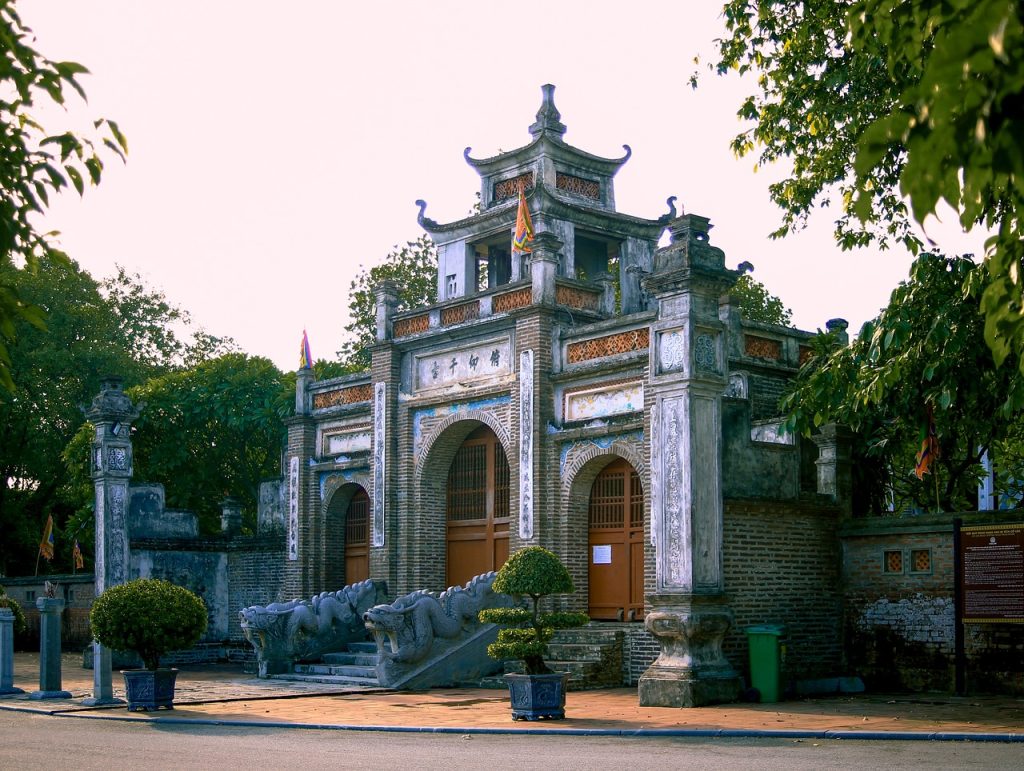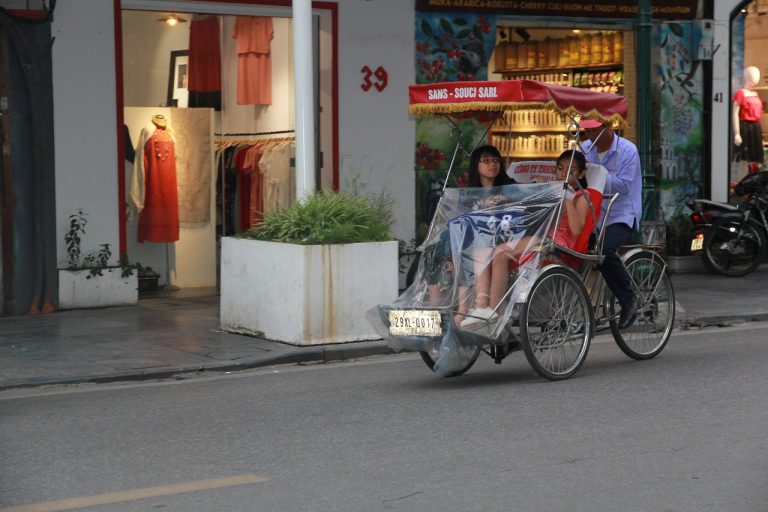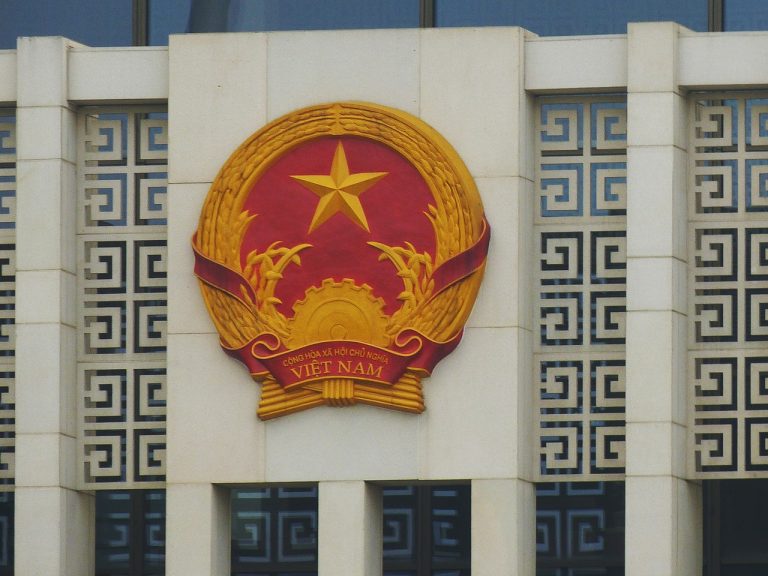Hanoi Vietnam Video
Public Transportation in Hanoi Vietnam: A Complete Guide
Hanoi, the capital city of Vietnam, is a bustling metropolis with a rich history and vibrant culture. As a popular tourist destination, it is important to know how to navigate the city efficiently. Luckily, Hanoi offers a variety of public transportation options that can help you explore the city easily. In this guide, we will provide a comprehensive overview of the public transportation system in Hanoi, including buses, taxis, motorbikes, and more.
Bus System
The bus system in Hanoi is an affordable and convenient way to get around the city. With a vast network of routes, buses can take you to almost every part of Hanoi. The buses are color-coded based on their routes, making it easier for travelers to identify their desired bus. The fares are relatively cheap, and you can pay with cash or a prepaid bus card. Here are some key points about the bus system in Hanoi:
- Frequency: Buses in Hanoi run frequently, with intervals ranging from 5 to 20 minutes depending on the route and time of day.
- Operating Hours: Most buses operate from early morning until around 9 or 10 PM. However, some routes may have extended operating hours.
- Bus Stops: Bus stops in Hanoi are clearly marked with signs displaying the bus numbers and destinations. Look out for the bus symbol on the signposts.
- Paying Fares: You can pay the bus fare directly to the driver in cash or use a prepaid bus card, which offers discounted fares.
- Route Maps: Route maps are available at bus stops and online. They provide detailed information about bus routes, stops, and destinations.
Keywords: bus system, affordable, convenient, color-coded, fares, frequency, operating hours, bus stops, paying fares, route maps
Taxi Services
Taxis are a popular mode of transportation in Hanoi, especially for travelers who prefer a more comfortable and convenient option. There are various taxi companies operating in the city, offering both metered and fixed-rate fares. Here are some important details about taxi services in Hanoi:
- Taxi Companies: Some of the well-known taxi companies in Hanoi include Mai Linh, Vinasun, and Grab. It is recommended to choose reputable taxi companies to ensure safety and fair fares.
- Flagging a Taxi: Taxis can be easily flagged down on the street, or you can find them at designated taxi stands throughout the city.
- Metered Fares: Metered taxis charge fares based on distance traveled and time spent in the taxi. Make sure the meter is running and request a receipt at the end of the ride.
- Fixed-rate Fares: Some taxis offer fixed-rate fares for specific routes or airport transfers. Agree on the fare before starting the journey.
- Mobile Applications: Ride-hailing apps like Grab are widely used in Hanoi. They provide a convenient way to book and pay for taxis using your smartphone.
Keywords: taxi services, metered fares, fixed-rate fares, taxi companies, flagging a taxi, mobile applications
Hanoi Vietnam Image 1: 
Motorbike Taxis
Motorbike taxis, also known as xe om, are a popular and unique mode of transportation in Hanoi. This option is ideal for short distances or navigating through narrow and congested streets. Here are some essential points to know about motorbike taxis:
- Availability: Motorbike taxis can be found throughout the city, especially near tourist areas, markets, and major transportation hubs.
- Hiring: To hire a motorbike taxi, simply wave your hand or approach a driver and negotiate the fare before starting the journey.
- Helmet: Ensure that the driver provides you with a helmet for safety. It is mandatory to wear helmets while riding motorbikes in Vietnam.
- Fares: Motorbike taxi fares are usually lower than taxi fares. However, it is advisable to agree on the fare in advance to avoid any confusion.
- Experience: Riding a motorbike taxi in Hanoi can be an exciting and adventurous experience, allowing you to immerse yourself in the local culture.
Keywords: motorbike taxis, xe om, availability, hiring, helmet, fares, experience
Motorbike Rental
For travelers who prefer to explore Hanoi independently, renting a motorbike can be a convenient option. It provides the freedom to visit various attractions at your own pace. Here are some important details about motorbike rental in Hanoi:
- Rental Shops: There are numerous rental shops in Hanoi where you can find a wide range of motorbikes available for rent.
- Requirements: To rent a motorbike, you need a valid international driving license or a Vietnamese driving license. Some rental shops may also require a deposit.
- Rental Rates: Motorbike rental rates vary depending on the type of motorbike and rental duration. It is advisable to compare prices and read reviews before choosing a rental shop.
- Insurance: Check if the rental includes insurance coverage for accidents or damages. If not, consider purchasing travel insurance that covers motorbike rentals.
- Riding Safety: Familiarize yourself with the traffic rules and regulations in Vietnam before riding a motorbike. Always wear a helmet and exercise caution on the roads.
Keywords: motorbike rental, rental shops, requirements, rental rates, insurance, riding safety
Hanoi Vietnam Image 2: 
Subway System
Hanoi is currently developing its subway system, which will provide a modern and efficient way to travel within the city. Although the subway network is still under construction, the first line is expected to be operational in the near future. Here are some key points about the upcoming subway system in Hanoi:
- Line 1: The first line of the Hanoi subway, also known as the Cat Linh-Ha Dong line, will connect the city center with the southwestern suburbs.
- Stations: Line 1 will have a total of 12 stations, including major transportation hubs, commercial areas, and residential neighborhoods.
- Modern Amenities: The Hanoi subway system will feature modern amenities such as air conditioning, Wi-Fi, and barrier-free access for people with disabilities.
- Future Expansion: Hanoi plans to expand its subway network in the coming years, with additional lines connecting different parts of the city.
- Updates: Stay informed about the progress of the subway system through official announcements and local news sources.
Keywords: subway system, Line 1, stations, modern amenities, future expansion, updates
Ridesharing Services
Ridesharing services, such as Grab, are gaining popularity in Hanoi as a convenient and reliable transportation option. These services allow you to book a car or motorbike taxi through a mobile app. Here are some important details about ridesharing services in Hanoi:
- Mobile Applications: Download the Grab app or other ridesharing apps to book a ride. The app provides real-time information about the driver, fare estimates, and trip details.
- Vehicle Options: Ridesharing services offer various vehicle options, including cars, motorbikes, and even luxury vehicles, depending on your preference and group size.
- Fixed Fares: The fare for ridesharing services is usually fixed and displayed on the app before booking. This eliminates the need for negotiation and provides transparency.
- Payment: Ridesharing services accept cash and digital payments. You can link your credit card or mobile wallet to the app for seamless transactions.
- Driver Ratings: After each trip, you have the opportunity to rate the driver based on your experience. This helps maintain a quality standard for the service.
Keywords: ridesharing services, mobile applications, vehicle options, fixed fares, payment, driver ratings
Walking and Cycling
Exploring Hanoi on foot or by bicycle is a fantastic way to immerse yourself in the city’s charm and discover hidden gems. Hanoi has many pedestrian-friendly areas and dedicated cycling lanes. Here are some points to consider for walking and cycling in Hanoi:
- Pedestrian Streets: The Old Quarter and Hoan Kiem Lake area are pedestrian-friendly zones, allowing you to wander through the narrow streets and soak in the atmosphere.
- Bicycle Rental: Numerous shops and hotels in Hanoi offer bicycle rentals. It is a cost-effective and eco-friendly way to explore the city.
- Cycling Safety: Familiarize yourself with the local traffic rules and wear a helmet while cycling. Be cautious of motorbikes and cars on the road.
- Landmarks: Walking or cycling allows you to easily access popular landmarks such as the Temple of Literature, Ho Chi Minh Mausoleum, and West Lake.
- Guided Tours: Joining a guided walking or cycling tour can provide valuable insights into Hanoi’s history, culture, and architecture.
Keywords: walking, cycling, pedestrian streets, bicycle rental, cycling safety, landmarks, guided tours
Hanoi Vietnam Image 3: 
Conclusion
In conclusion, Hanoi offers a comprehensive public transportation system that caters to the needs of both locals and tourists. Whether you choose to take the bus, taxi, motorbike taxi, subway, ridesharing services, or explore on foot or by bicycle, there are plenty of options to suit your preferences and budget. By familiarizing yourself with the different modes of transportation and their features, you can navigate Hanoi with ease and make the most of your visit to this vibrant city.
References
– vietnam.travel
– hanoi.gov.vn
– grab.com/vn
– maiair.vn
– vinasun.com.vn







